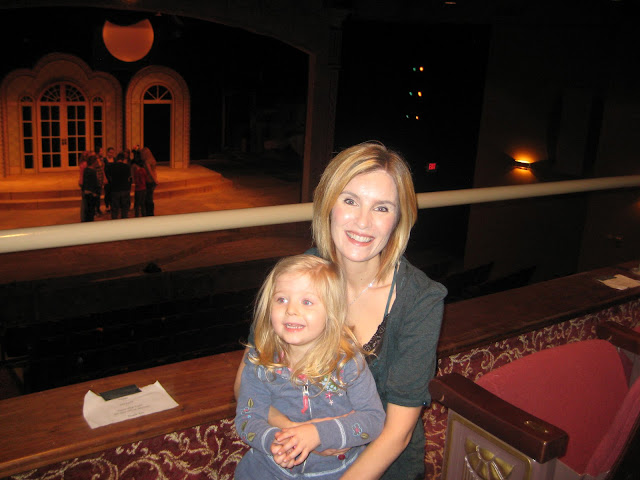Last week I posted a piece about Folklore seeming too edgy for youth audiences. This week I want to delve into the bigger issue of the structure of folktales for our youth.
Oral folklore is by nature not a gentle package. There are high stakes, sometimes death, trickery, characters who are greedy, selfish and others who are kind, gentle and generous. Folklore, put simply, is human nature. Every culture has its tie to oral storytelling. Since the invention of the printing press, we have had the unique opportunity to distribute world stories from different cultures, in print. This of course, is a condensed explanation.
Since folklore has so many dangerous story elements, it doesn't always work well within the American psyche. As a culture we want to shield our children, exposing only the goodness of life; even though we know that our children will find violence, sadness, exploitation in other ways. Life will make its way to our kids.
 |
| Mara's 2 Year Old Storytelling Class, It is never to young to start telling stories! |
As a storyteller, I also know it is my job to play into the American psyche to some degree. I know that I can't always go into a school and tell the "actual" terrible ending to a story. Instead, I might change aspects of the story, while trying to remain sensitive to the cultural, style, and rhythms of the story. When I rewrite tales for our Treehouse Shakers' dance-plays, I have to rework many of the endings. In
Animal Rhythms, for example, one of the stories from West Africa involves a frog and a hen. For most of the story the frog is lazy and refuses to help the hen gather food, make a shelter, build a fire, or even to make a bed. In the end a hawk carries off the frog. Or so is our ending. In the other versions I have read, the hawk rips and shreds the frog into tiny, bloody pieces. This ending warns humans of not doing our part, and how we will be punished. In American society I can only imagine the storm of angry parents walking out from the theater with their young children crying and traumatized in tow. In our ending audiences can imagine what happens. I have also kept the story intact, for the most part, breaking it up with live-drumming, and the melding of choreography. We do a lot of call and response with the audience, in line with the traditional oral telling.
 |
| Animal Rhythms: Frog and Hen Here Arts Center 2007 |
I don't always change the endings though. In
Coyote's Dance, we have left most of the story endings intact. Coyote is the masterful trickster who has been given many lives by the Great Universe. Coyote, during one of his foolish, boastful feats, falls from the sky into tiny pieces. He dies not only once, but twice. And then is reborn again. I kept the ending. The show is darker in feeling than our other folklore trilogy. The ending is kept in its sacred format. The response; audiences love Coyote. Young audiences love seeing that Coyote, no matter what, prevails.
 |
| Coyote Being Put Together Again in Coyote's Dance |
Our children need the darkness. It is essential that they witness characters overcoming great obstacles and succeeding. They need to know that life will give us problems. It is how we manage these problems that makes us who we are. Sometimes it is even our own selfish blunders that get us into trouble. There are messages, deep human messages; treat others with kindness, don't be jealous of your neighbor, generosity can go a long way. As a parent, I love telling my daughter folklore, fairy tales, myths. She eats them up. There is love, death, conflicts, spells, birth, and magic. These stories have become a part of her. She plays stories when she is by herself, working out the conflicts and resolutions, finding the characteristics of the story, learning story structure. She is 3 years old and developing her sense of self through story.
I have also told these stories to children who have seen and felt too much in their young lives; who may have been abused, neglected, and raised in unbelievable poverty and circumstances. These kids need to hear that when when one character takes advantage of another, consequences happen. They can imagine their own path out of the dark shadowy forest, into the sunlight path and home to the warm cottage. They need to hear stories of bravery, success and kindness. These stories become helpful tools in their own survival.
For every critic who tells me that folklore is too scary, too dangerous, an unnecessary tool in education, and not a selling point for the theater, I say this; tell a story to a young person. Watch their face. See their excitement and then visit this child in a week. I guarantee that they will be begging for the story to be told again!
 |
| Students after seeing Animal Rhythms |
|
|
|
|
|
Performance Animal Rhythms Photo: Mercedes McAndrew
Performance Coyote's Dance Photo: Dan Ozminkowski









Interesting - I never considered that theater presenters would consider folklore 'edgy.' Thanks, Treehouse, for your courage in continuing to create rich, mult-dimensional works for kids, no matter what anybody says!
ReplyDelete